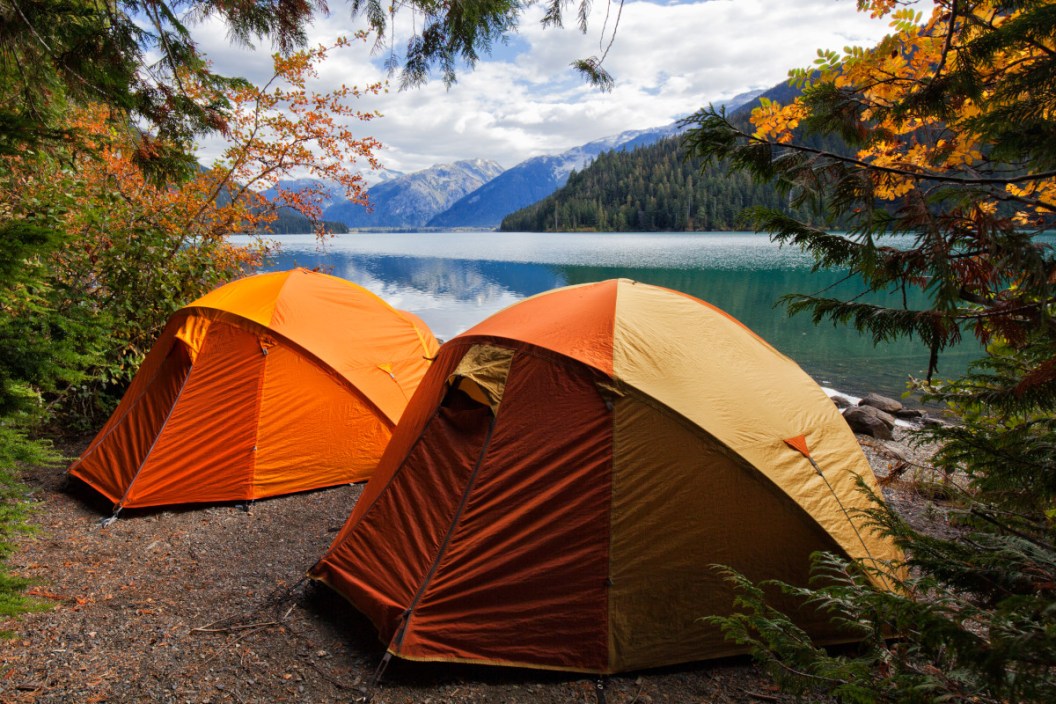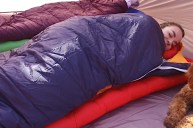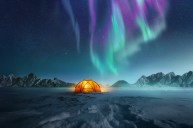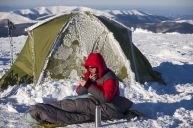While most people plan their camping trips around the summer, there's something special about fall camping. The bugs are mostly gone, the campgrounds are less crowded after Labor Day, and the spectacular fall colors are hard to beat. Throw in the cooler temperatures, and you've got some of the best sleeping weather for camping that you'll ever experience. Of course, camping in the fall comes with its challenges. Some campers have one miserable, cold September or October experience and refuse to give that time of year another chance. This is a shame because when adequately prepared, we believe it is one of the best outdoor adventures you can have.
We've been fortunate enough to do quite a bit of camping in the fall months in recent years, and we've learned the hard way what to do and what not to do on your first fall getaway. Today we'll provide some fall camping tips to help make the experience as comfortable as possible. After doing it properly once, you may find that fall is your new favorite camping season, as we have over the years.
What to Pack for Camping in the Fall
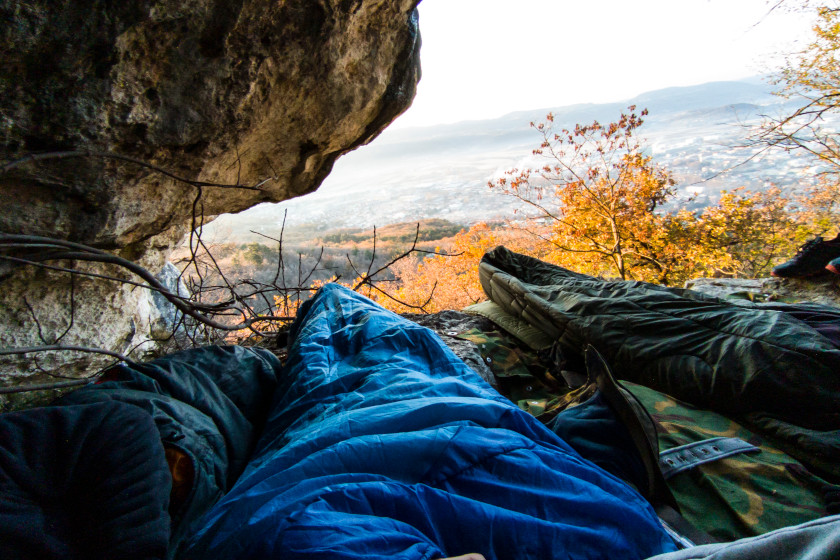
kmatija via Getty Images
It usually doesn't apply to RVs, but most fall camping trips involve dealing with cold weather, which is why my sleeping bag is my single most important consideration for any fall trip. I've been using the Big Agnes Sidewinder Camp 20 for about a year, and it's the best sleeping bag I've ever used. The combination of synthetic and down makes it extremely light yet incredibly toasty for those frosty mornings. With any sleeping bag, you will get what you pay for, which is why I recommend buying the best bag you can afford. Here in the Midwestern United States, I wouldn't venture out without a bag rated for 20 to 30 degrees at a minimum. It never hurts to go lower than that, either. It's easier to cool down if you're too hot than to warm up if you're losing body heat in an inadequate bag.
Go with a down sleeping bag insulation for dry areas and a synthetic material if there's a chance you might get wet. The synthetic material does better staying warm if you accidentally get wet. If you plan on backpacking, down compresses better to haul more camping gear. As important as the sleeping bag is what you'll be sleeping on. Go for the thickest sleeping pad you can carry. A cot or air mattress is even better for tent camping in an established area. The ground is going to get rather cold at night. That cold will leach up into your sleeping bag and body unless you can provide some separation between the two.
I usually bring along at least one extra blanket when I'm car camping. It's better to have it and not need it than need it and not have it. Some campers like to bring a hot water bottle to heat up and stash it under their sleeping bag at night as an additional heat source.
Another essential thing to pack in addition to warmer clothing is quality base layers. Avoid cotton; go for wool and down. They cost much more than cotton, but they help retain your body heat. If you want light and warm, go for Merino wool. It's the most expensive of the bunch, but it's also the warmest. It also has moisture-wicking and odor control properties that will make your camping much more enjoyable, especially if your camping plans involve canoeing or taking a kayak out for a bit of fishing or leaf-peeping.
The last thing I would suggest for comfort is a quality three-season tent at a minimum, although a four-season is even better. Just because these tents are specifically designed with the fall in mind, they also usually have a better rain fly than a one or two-season tent. I recommend applying some seam sealer to every stitched surface on the tent and fly. It just adds a little extra protection against water getting into the tent and will help keep you warmer.
Besides that, most of the gear you use in the summer months is still good into the fall. I recommend always packing rain gear because one never knows what the weather might bring in the transitional period between summer and winter. Otherwise, you can load the usual headlamps, cooking supplies, coolers, and camp axes you might typically use.
Preparing For a Fall Camping Trip

AleksandarNakic via Getty Images
If you plan on tent camping, I highly recommend sealing your tent before heading out, even if the manufacturer already did. It never hurts to be redundant and ensure all the stitched areas are sealed off from moisture. Pay close attention to the corners of your tent, as that's where most leaks will start. It's not a bad idea to seam seal your rain fly either.
I like to bring along an extra tarp to set up over my rain fly for some camping trips. I've also seen people use one of those pop-up shelters over their tent for a little extra protection from the late fall rains. It may seem overkill, but getting wet in your tent is miserable enough when it is warm outside. When you combine a damp tent with cold weather, it becomes downright intolerable. It could even be dangerous in extreme circumstances if hypothermia starts to set in.
For those planning to use campgrounds with full hookups, I like using an electric blanket for a little additional heat if the forecast calls for frigid temperatures. I've also used a little electric or ceramic heater in my tent before, but I've moved away from that practice recently. Primarily because if you are using proper padding and a sleeping bag, they are not necessary. It also helps to eat a filling meal before you head to bed for the evening. Pack something with high calories because your body will burn more when it is cold. Bring a quality camp stove to prep the meals nice and hot. A quality, high-calorie meal will help significantly maintain your body temperature during the night. My last tip is to pack a warm winter hat to wear to bed. It will help retain heat that you would otherwise lose through your head.
Avoiding the Crowds
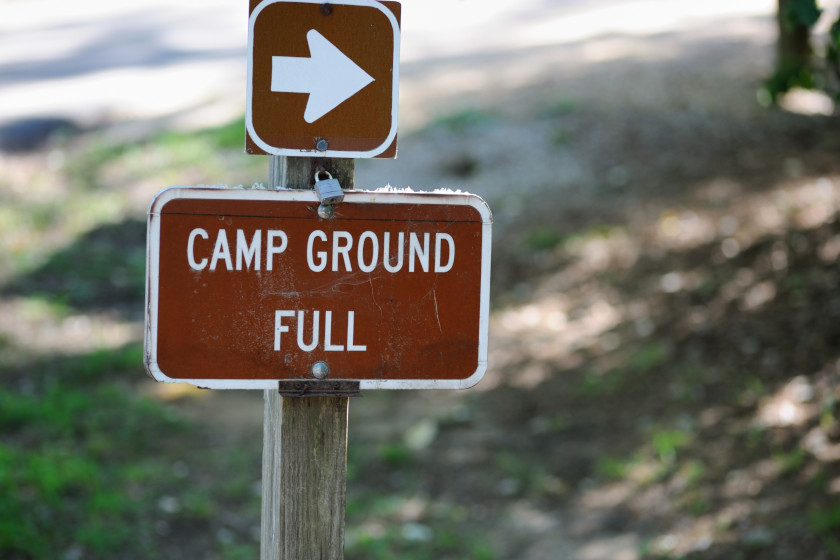
sshepard via Getty Images
Unfortunately, the secret about fall camping adventures is starting to leak out. I have noticed a marked increase in filled camping spots at my favorite state parks in recent years. That means taking advantage of reservation systems if you want to ensure you have a place at an established campground. However, if you pick the right location, you can still find peace. Check for seasonal closures on campgrounds. These don't happen everywhere, but the last weekend usually comes with an added benefit. For instance, last year, I stayed in Bewabic State Park in Michigan's upper peninsula in late September. I didn't realize until I got there that the park was just days away from closing for the winter. Most regulars had cleared out for the season, making for a pleasant and quiet experience.
The same goes for National Parks. My favorite trip to Yellowstone was mid-October, just before the east gate slammed shut for the season. Imagine my shock when I got to Old Faithful, and only ten people were walking around, some of whom were rangers finishing up their fall chores. It's a great time of year to hit the hiking trails and enjoy some waterfalls without the crowds of stupid tourists who ruin the otherwise peaceful experience in the summer. The downside to scheduling late for somewhere like Yellowstone is you don't know when the park will close, so there's a chance you could miss out entirely if winter arrives early. We recommend calling ahead to a place with an unpredictable schedule. The Rangers usually know when they will be directed to wrap things up for the season.
Here in Michigan, I've noticed that things slow down after Labor Day. However, they pick back up again in the state parks around Halloween because many campgrounds are now having themed spooky weekends in the campgrounds. However, these themed weekends can be a fun experience, especially for the kids. But it also means most sites and rustic cabins are fully booked months in advance.
Finally, I highly recommend booking your stay between a Monday and Friday in the fall. These are the quietest times because most kids are back in school, and tons of after-school activities and sports are eating up people's spare time this time of year. That is usually the perfect time for a quiet road trip to your favorite National Forest or State Park.
For more outdoor content from Travis Smola, follow him on Twitter and Instagram. Check out his Geocaching and Outdoors with Travis YouTube channels for original videos.
